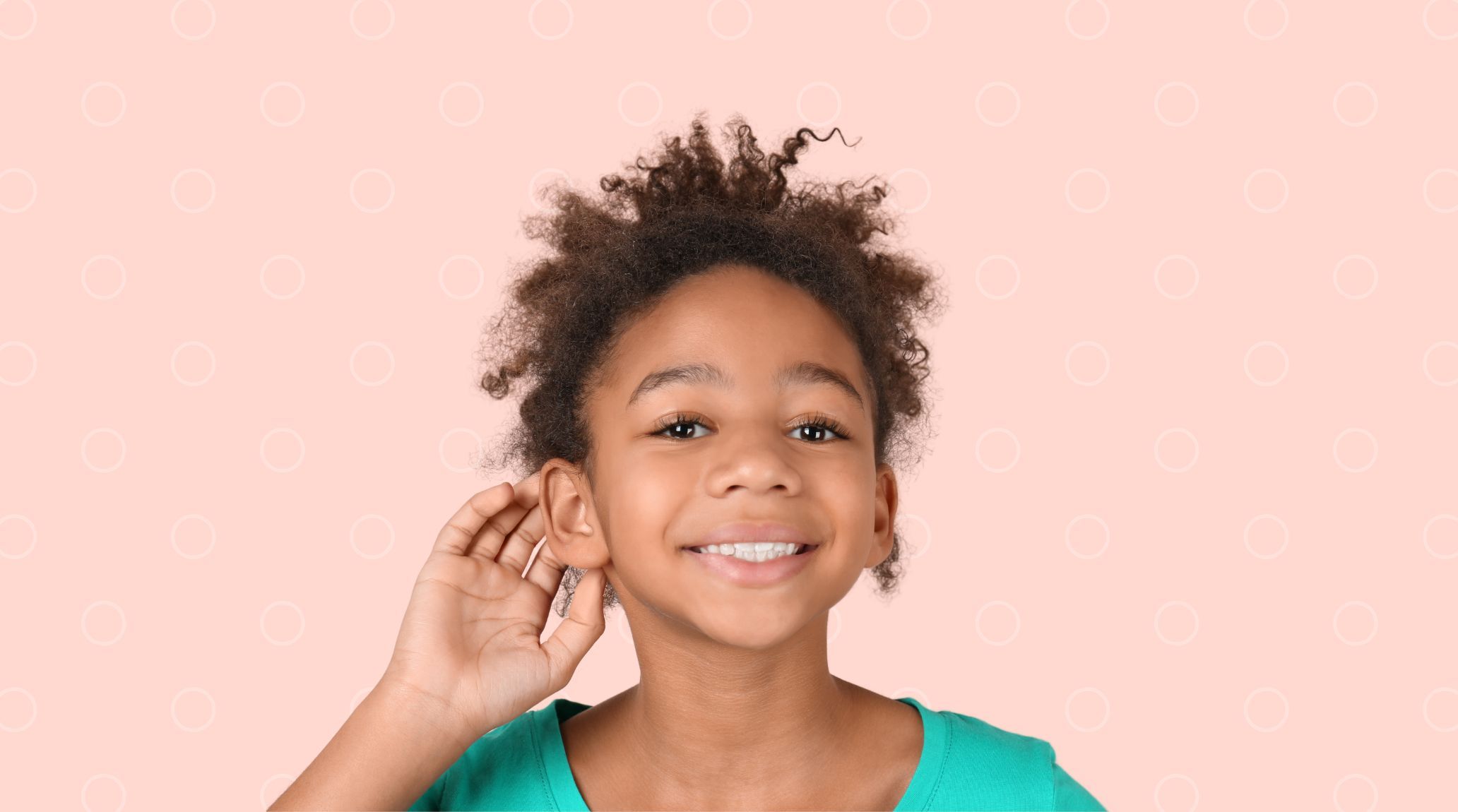
“
Ears, where every sound turns into an amazing story! Get ready to discover fun facts about ears that will make you go "WOW!" Whether it's hearing whispers from fairies or keeping you balanced like a circus acrobat, your ears do incredible things every day. So, let's dive into this enchanted adventure and learn just how amazing our ears truly are!1
1
”
Did you know your ears clean themselves? They make earwax to trap dirt and keep your ears nice and healthy. It's their way of staying clean and clear for all the sounds you love to hear.1
Earprints can also be used to tell who you are. The special folds and lines in your ears are unique to you, like a secret code that only your ears have. This helps people identify you, even if they can't see your face! 2
Studies show that we often hear music better on our left side. This is because the left ear sends sound directly to the right side of the brain, which is more adept at processing music. So, your left ear might give you a richer musical experience! 3
Did you know that our ears are always growing? Each year, they grow about 0.22 millimeters, which is nearly as much as a grain of rice. This gradual growth happens slowly over time, much like how our bodies change as we age. 4
The earliest ear surgeries are attributed to ancient India, around 600 BCE, with Sushruta detailing procedures for repairing ear injuries and deformities. His techniques included reconstructing ears using grafts and other methods, influencing modern otolaryngology practices. 5

The most pierced man is Rolf Buchholz from Dortmund, Germany. As of August 5, 2010, he had a total of 453 piercings. This includes 158 around his lips, 16 in his right ear, 15 in his left ear, and numerous piercings in other areas like his eyebrows, nose, tongue, and even his genital area.
Bats use their ears for echolocation, emitting high-frequency sounds that bounce off objects and return as echoes. Their highly sensitive ears help them navigate in the dark and locate prey with remarkable accuracy. 6
Did you know that your ears never actually sleep? They continue to detect and process sounds around you even while you’re asleep. This constant activity helps your brain stay alert to potential dangers and changes in your environment. 7
The ears are connected to the nose and throat through a channel called the Eustachian tube. This connection helps equalize pressure in the middle ear and allows for drainage of fluid. It also plays a role in maintaining balance and hearing function. 8
Wearing headphones for just one hour can boost the bacteria in your ears by up to 700 times. This rapid increase in bacteria highlights the importance of regularly cleaning your headphones to prevent potential ear infections. 9
Monte Pierce from the USA holds a remarkable record for stretching his earlobes. His left earlobe stretches to an impressive 12.7 cm (5 inches), while his right earlobe reaches 11.43 cm (4.5 inches). This extraordinary ability demonstrates the extent to which earlobes can be elongated. 10
New smart earbuds offer more than just audio playback. They come equipped with sensors to monitor health metrics such as heart rate and body temperature and can even provide real-time translation of languages, enhancing communication and overall user experience. 11
Deer have large, movable ears that help them detect predators. Their ears can swivel independently, allowing them to hear sounds from different directions, while their antlers are used for signaling and fighting. 12
Just one exposure to loud noise at 85 decibels or higher can cause permanent hearing damage. Sounds reaching 120 decibels can harm your hearing in as little as 7.5 minutes. Protecting your ears from intense noise is crucial to prevent lasting damage. 13
Sound waves travel through the air at approximately 330 meters per second (m/s). This speed allows us to hear sounds almost instantly as they reach our ears. The speed of sound can vary depending on factors like temperature and air pressure14

Anthony Victor from India, a retired headmaster, holds the record for the longest ear hair, measuring 18.1 cm (7.12 inches) in 2007. His students affectionately called him the 'ear-haired teacher' because of this unusual feature.
Each year, you get a 'new' ear canal thanks to the skin inside it. The skin grows about 1.3 inches annually, pushing out the old skin as it replaces itself. It’s like a fresh renewal of your ear canal every year! 15

The most pierced woman is Elaine Davidson from Brazil/UK. As of May 4, 2000, she had a total of 462 piercings, including 192 on her face, 56 on her body, and 214 in her pubic area. Her extensive collection highlights her remarkable dedication to body art.
A study by the University of Newcastle found the ten most unpleasant sounds to include a knife scraping a bottle, nails on a blackboard, and a baby crying. These noises are especially jarring due to their high-frequency or harsh qualities. 16

Brain-computer interfaces (BCIs), though experimental, offer the potential for severe hearing loss by bypassing damaged auditory parts and directly stimulating the brain to create sound perception. These advancements are promising and could lead to more innovative solutions in the future.


